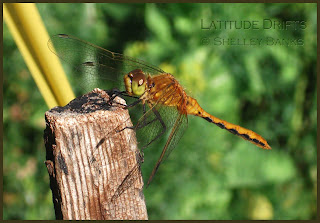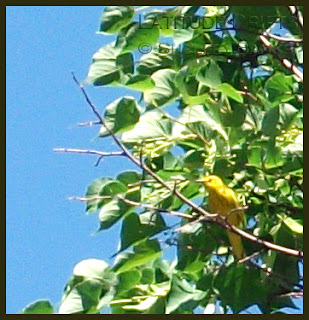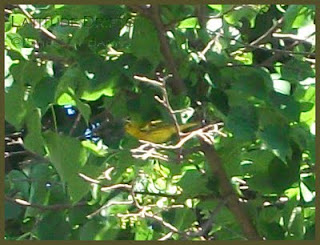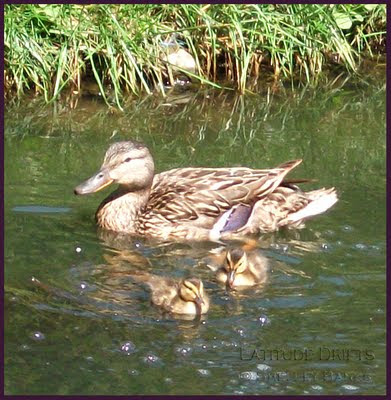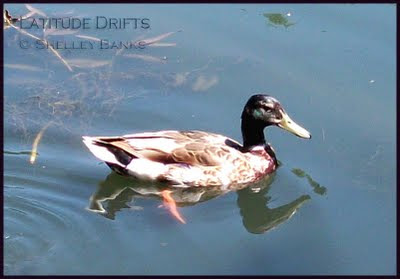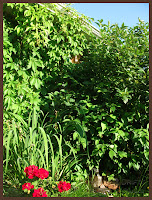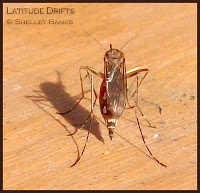This is rattlesnake country. Yes, this frog is only a few inches long, but any movement by any unseen creature is alarming.
 |
| Northern Leopard Frog camouflaged in grass, as well as water weeds. Grasslands National Park. © SB |
There was at least one other frog in these mown roadside grasses — when G got out of the car to see what I was taking pictures of, one hopped away from him, too. More cautious, that second frog hopped back under the grass and stayed hidden.
In the West Block of Grasslands National Park, Northern Leopard Frogs are most likely to be seen in sloughs, puddles, marshes and the brackish water along the edges of the Frenchman River. We were in the valley, very near a bend in the river and close to a muddy ditch, when this one appeared.
Later, we saw several more in the muddy wetlands between the old 76 Ranch corral and the Frenchman River.
 |
| Brilliant green frog, half-submerged in brackish water with reeds, at the old 76 Ranch in Grasslands National Park © SB |
Ask someone to illustrate a frog, and they’ll almost certainly draw a Northern Leopard Frog. The combination of green body and black spots seems to be engrained in most people’s minds when they visualize a frog, which seems pretty fair because the Leopard Frog, next to the Wood Frog, is the most widespread, easily encountered species in Canada. (from Reptiles and Amphibians of Canada: Fisher, Joynt, Brooks, Lone Pine Press.)However, Northern Leopard Frog numbers began to decline in Western Canada during the mid to late 70s , and in the Prairies, they are now considered a species “of special concern” (Reptiles and Amphibians).
In Grasslands, the numbers of Northern Leopard Frogs (and frog sightings) vary significantly from year to year.
Here’s some advice for visitors who want to see them:
The best way to find them is to walk slowly along the edge of the water with your eyes on the ground. The frogs will be aware of you long before you are of them, and at first all you will see is the long, sudden leaps (of up to one metre), and the splashes, accompanied by squawks of alarm. Practice will allow you to make them out, little crouched shapes in the grass, or half-submerged beneath the bending waterside reeds. (from Guide to Herptiles of Grasslands National Park: Larry Powell.)Or, you could just stumble over them, like I did.
~~~~~

















